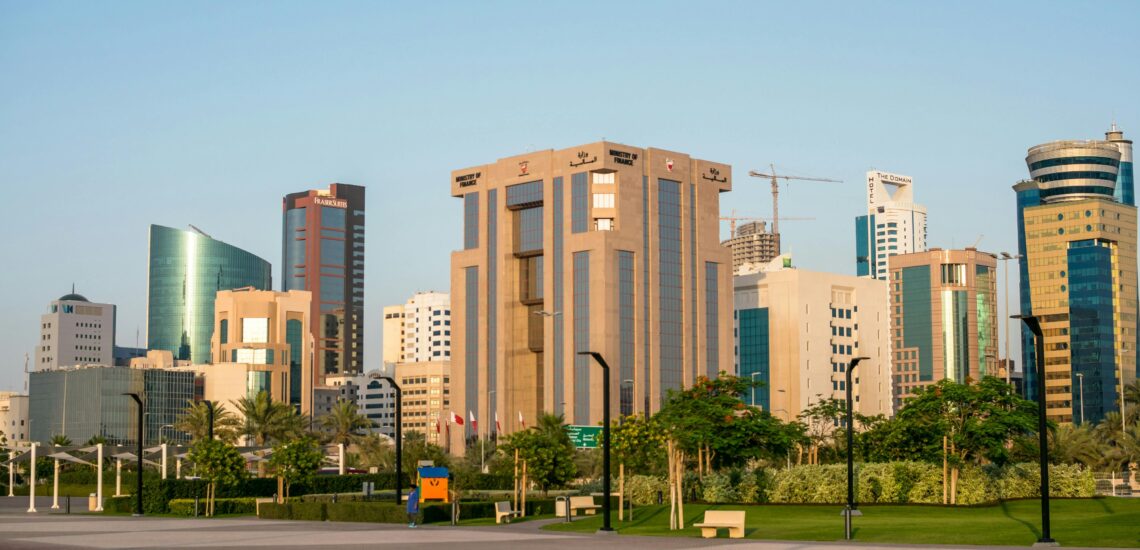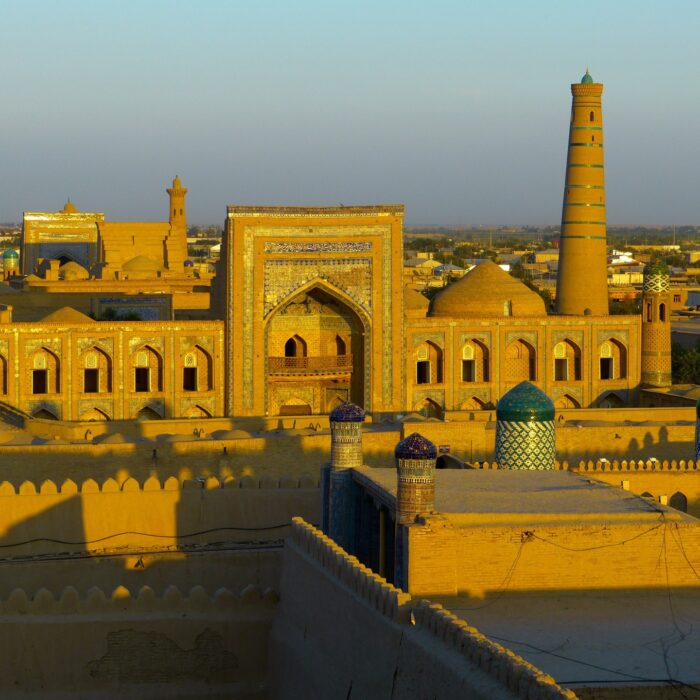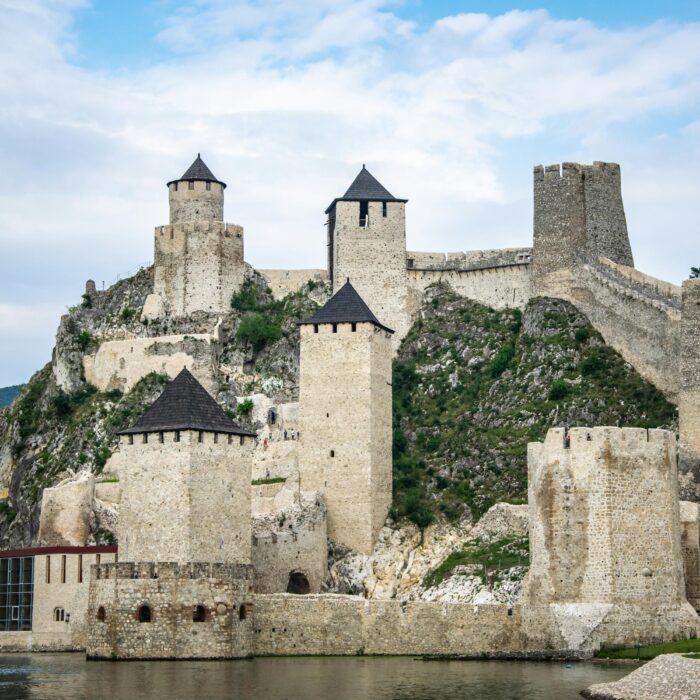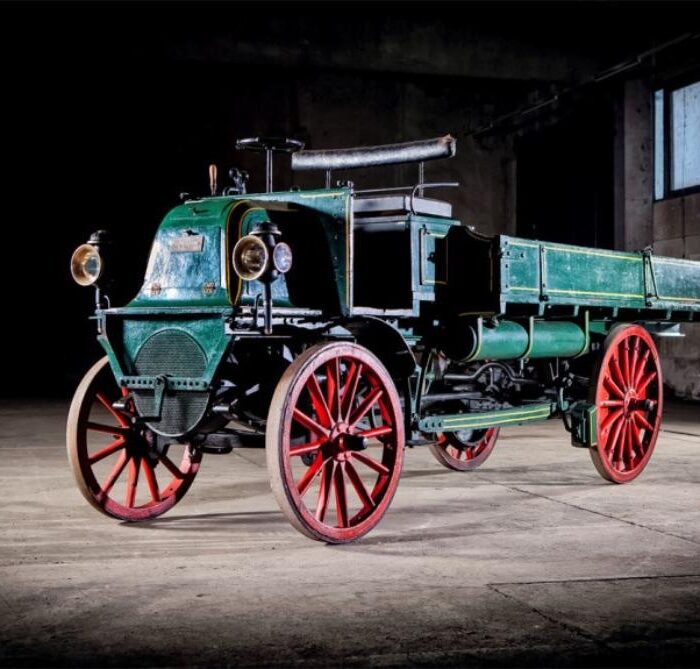Bahrain, known as the “Pearl of the Gulf,” offers a perfect blend of ancient history, modern luxury, and a welcoming atmosphere. With its UNESCO-listed heritage sites, bustling souks, and stunning coastline, Bahrain presents a unique mix of tradition and modernity, making it a must-visit destination in the Middle East.
Best Cities to Visit
Manama
As the capital and cultural hub of Bahrain, Manama is a fascinating blend of ancient history, modern skyscrapers, and rich traditions. The city offers a mix of historical landmarks, bustling souqs, and contemporary attractions, making it a must-visit destination in the Gulf region.
One of the city’s most significant historical sites is the Bahrain Fort (Qal’at al-Bahrain), a UNESCO World Heritage Site that dates back to the Dilmun civilization, over 4,000 years ago. This well-preserved fort overlooks the coastline and contains archaeological remains from Persian, Portuguese, and Islamic periods, offering insight into Bahrain’s ancient past.
For a taste of tradition, Bab Al Bahrain serves as the gateway to the Manama Souq, where visitors can explore narrow alleyways filled with shops selling spices, pearls, textiles, and traditional handicrafts. This historic marketplace is a great place to experience Bahraini culture and hospitality while shopping for authentic souvenirs.
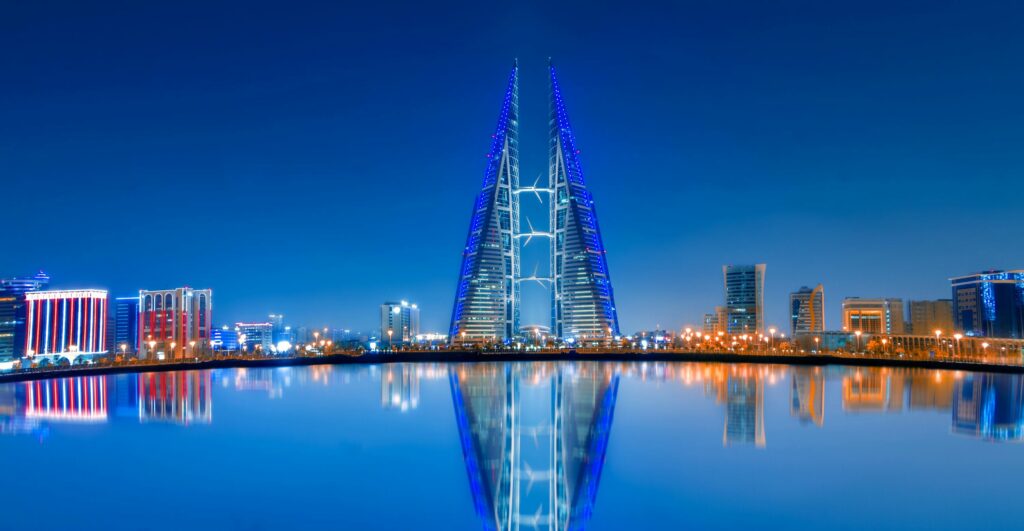
Muharraq
Once the capital of Bahrain, Muharraq is a city rich in heritage, traditional architecture, and historical significance, offering a glimpse into the country’s pearl diving legacy and royal past.
One of its most famous attractions is the Pearling Path, a UNESCO World Heritage Site that traces Bahrain’s historic pearl trade, which once made the island a global center for natural pearls. The route passes through traditional houses, old merchant shops, and coastal sites, giving visitors insight into the lives of pearl divers, traders, and the maritime culture that shaped Bahrain’s economy for centuries.
A highlight of Muharraq’s historical architecture is the Sheikh Isa Bin Ali House, an exquisite example of Bahraini royal architecture from the 19th century. This elegantly restored residence features wind towers (badgirs) for natural cooling, intricate woodwork, and beautiful courtyards, showcasing the traditional lifestyle of Bahraini rulers.
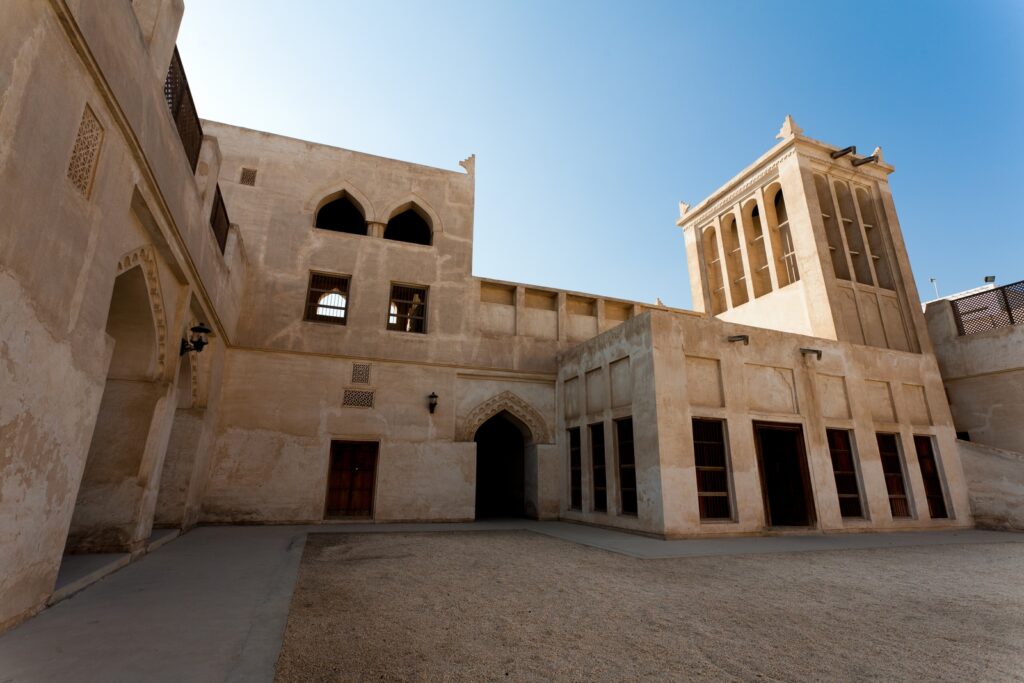
Riffa
One of its most significant landmarks is Riffa Fort, also known as Sheikh Salman Bin Ahmed Fort. This beautifully restored 19th-century fortress offers panoramic views of the desert landscape, along with exhibits showcasing Bahrain’s ruling family history and traditional architecture. The fort’s strategic hilltop location made it a key defensive site during Bahrain’s early history.
For leisure seekers, the Royal Golf Club stands out as one of the premier golf courses in the Gulf region, designed by Colin Montgomerie. The club features lush fairways, state-of-the-art facilities, and fine dining options, attracting both professional and casual golfers.
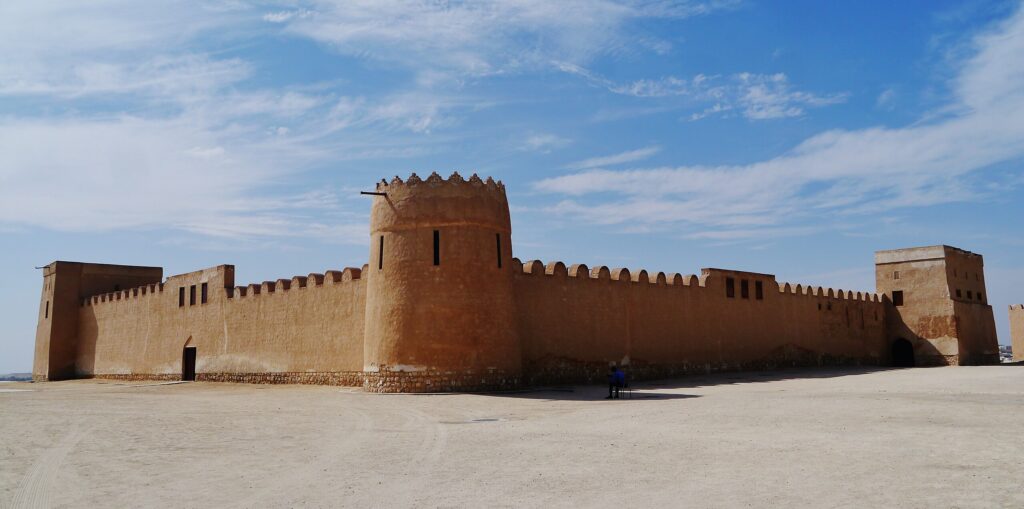
Isa Town
The Isa Town Market is one of the most popular traditional souqs in Bahrain, offering a wide variety of textiles, spices, perfumes, electronics, and household goods. This colorful market attracts both locals and tourists looking for authentic Bahraini shopping experiences and bargain deals. It’s a great place to find traditional fabrics for tailoring, handmade crafts, and exotic Middle Eastern spices.
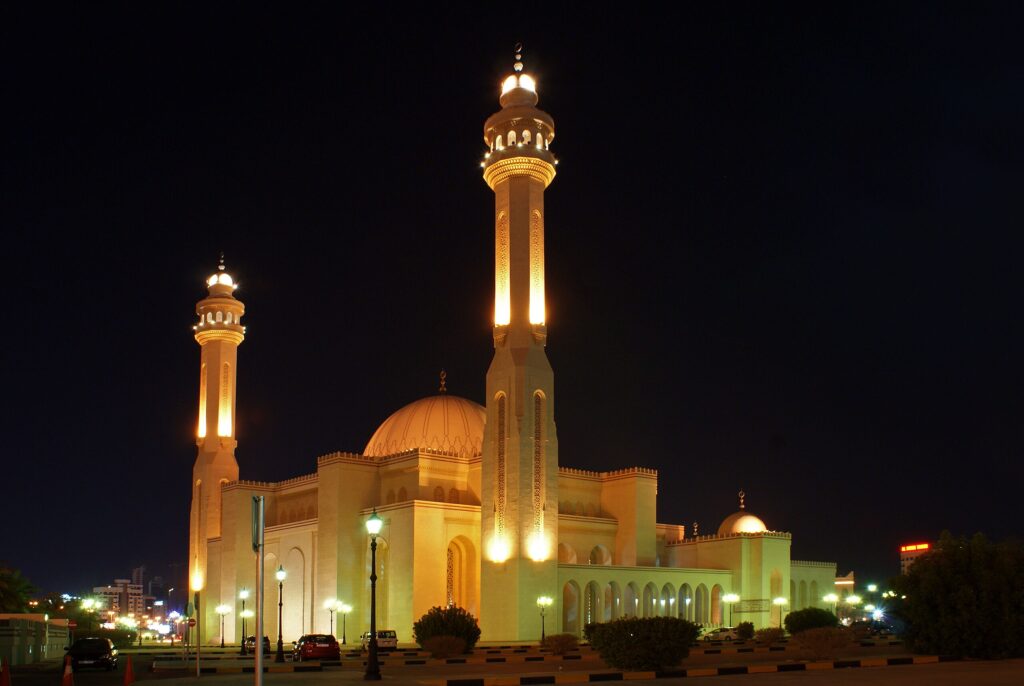
Best Natural Wonders
Hawar Islands
Located off the coast of southern Bahrain, the Hawar Islands are a group of stunning, unspoiled islands known for their crystal-clear waters, sandy beaches, and rich biodiversity. This remote paradise offers visitors a peaceful retreat, far from the bustle of city life, and is a haven for nature lovers, beachgoers, and eco-tourists.
Recognized as a UNESCO-listed wildlife reserve, the Hawar Islands are home to rare bird species, including the Socotra cormorant and flamingos, as well as dugongs, dolphins, and marine life thriving in the surrounding waters. The islands offer snorkeling, kayaking, and boat tours, allowing visitors to explore hidden coves and vibrant coral reefs.
Tree of Life
Rising alone in the vast Bahraini desert, the Tree of Life (Shajarat Al-Hayat) is a 400-year-old mesquite tree that has baffled scientists and visitors alike. With no visible water source, the tree continues to thrive in one of the harshest desert environments, making it a symbol of resilience and mystery.
Standing at about 9.75 meters (32 feet) tall, the Tree of Life is believed to have deep roots that tap into underground water reserves, though its survival remains a topic of debate. Surrounded by sand dunes, this isolated tree has become a popular tourist attraction, drawing visitors intrigued by its scientific mystery and cultural significance.
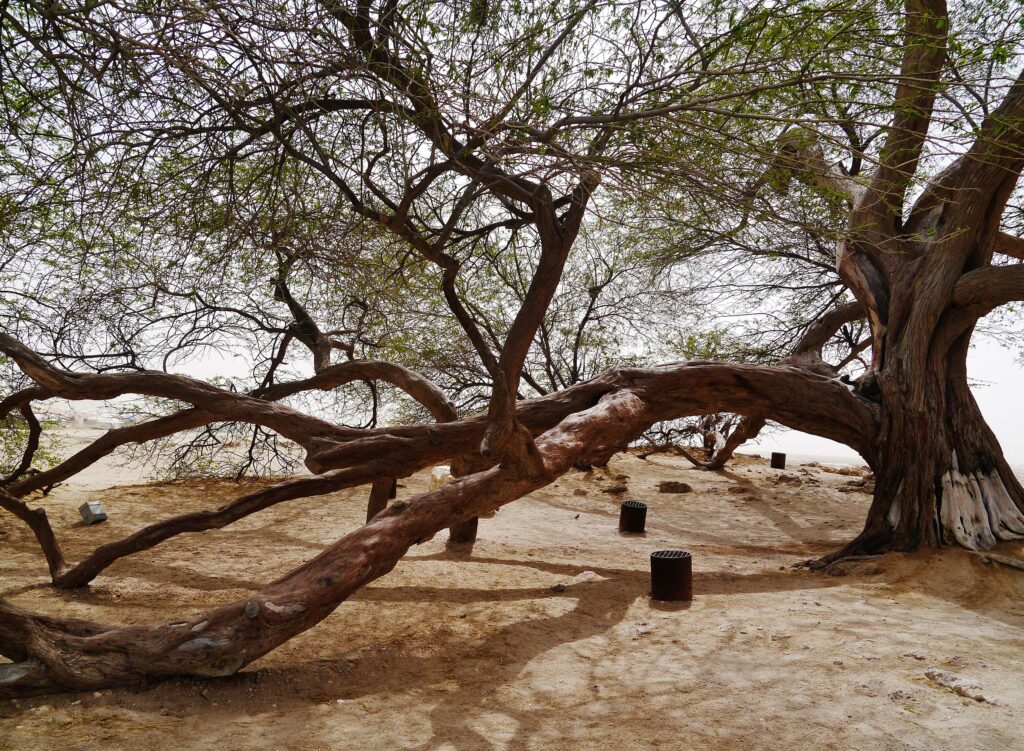
Al-Areen Wildlife Park
The park is home to over 80 species of animals and 100 species of birds, including the Arabian oryx, sand gazelles, ostriches, and flamingos. Visitors can explore the reserve through a guided safari tour, which allows them to observe majestic animals roaming freely in the open landscapes. The park also features lush botanical gardens, shaded picnic areas, and an educational center, making it a perfect escape for nature lovers and families.
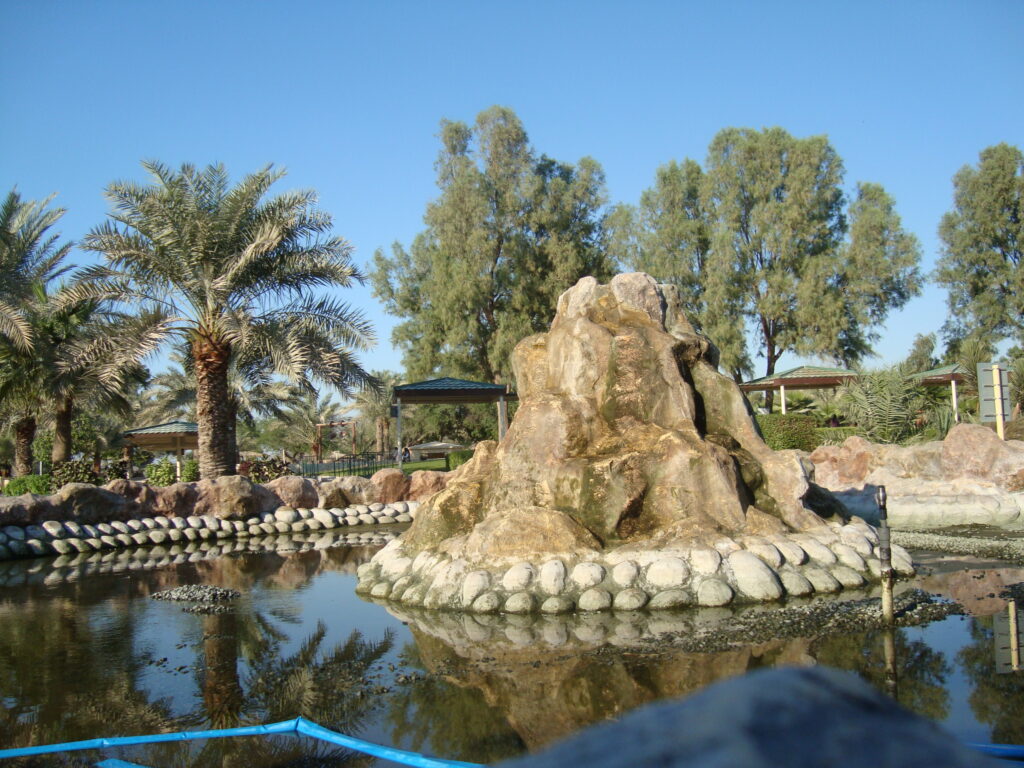
Sitra Beach
The beach provides stunning sunsets over the Arabian Gulf, creating a perfect setting for walks along the shore or simply unwinding by the water. While it is not as developed as some of Bahrain’s resort beaches, its natural beauty and quiet surroundings make it a favorite for those looking for a less crowded, more secluded coastal experience.
Hidden Gems of Bahrain
Pearling Path (Muharraq)
A UNESCO World Heritage Site, the Pearling Path in Muharraq is a historical trail that showcases Bahrain’s rich pearl diving heritage, which once made the island a global center for natural pearls. The path spans over 3 kilometers, linking 17 key sites, including traditional merchant houses, pearl divers’ homes, storehouses, and historic coastal locations.
Visitors can explore landmarks such as Bin Matar House, a beautifully restored merchant residence turned museum, displaying artifacts and stories from Bahrain’s pearling industry. The Bu Mahir Fort, located at the end of the trail, was historically the departure point for pearl divers heading out to sea in search of the kingdom’s famed pearls.

Qal’at Arad (Arad Fort)
Located near Muharraq, Qal’at Arad (Arad Fort) is a 16th-century defensive fortress that stands as one of Bahrain’s most well-preserved historic sites. Built in a traditional Islamic style, the fort was strategically positioned to guard Bahrain’s northern waterways and played a crucial role in protecting the island from invaders, including the Portuguese and Omanis.
The fort’s square design, thick coral-stone walls, and circular watchtowers reflect Bahraini and Arabian Gulf military architecture. Today, visitors can explore its corridors, climb its towers, and enjoy panoramic views of the surrounding waters.
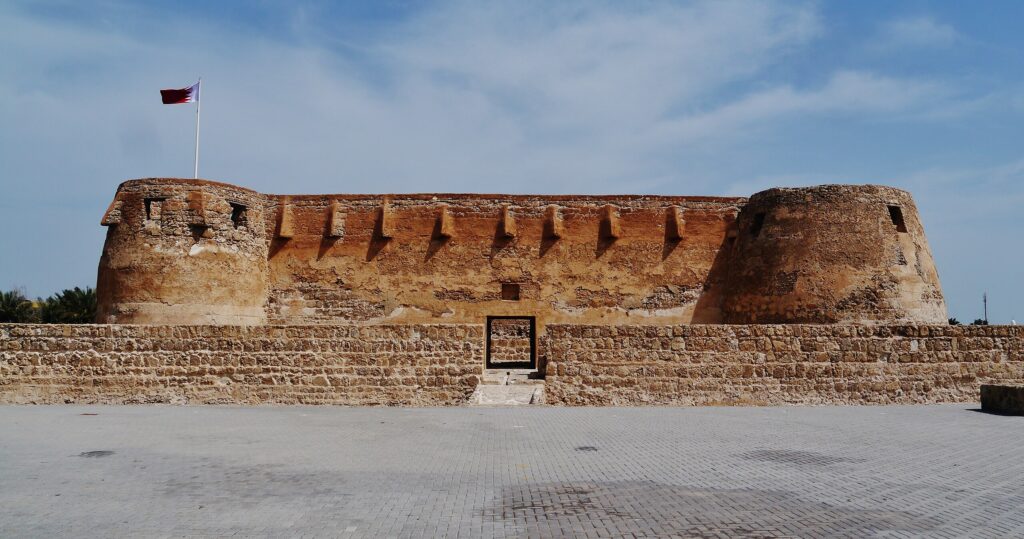
A’ali Burial Mounds
The A’ali Burial Mounds in Bahrain are one of the largest and most remarkable prehistoric burial sites in the world, dating back to the Dilmun civilization (c. 2200–1750 BCE). These thousands of burial mounds, scattered across the landscape, are a testament to Bahrain’s status as a significant trade and religious center in ancient Mesopotamian times.
Located in the village of A’ali, these mounds vary in size, with some reaching up to 15 meters in diameter and several meters in height. Archaeologists have discovered intricately designed tombs, pottery, and artifacts inside, suggesting the Dilmun people’s belief in an afterlife and their sophisticated burial practices. Some of these mounds were reserved for royalty and high-ranking individuals, making them even more elaborate.
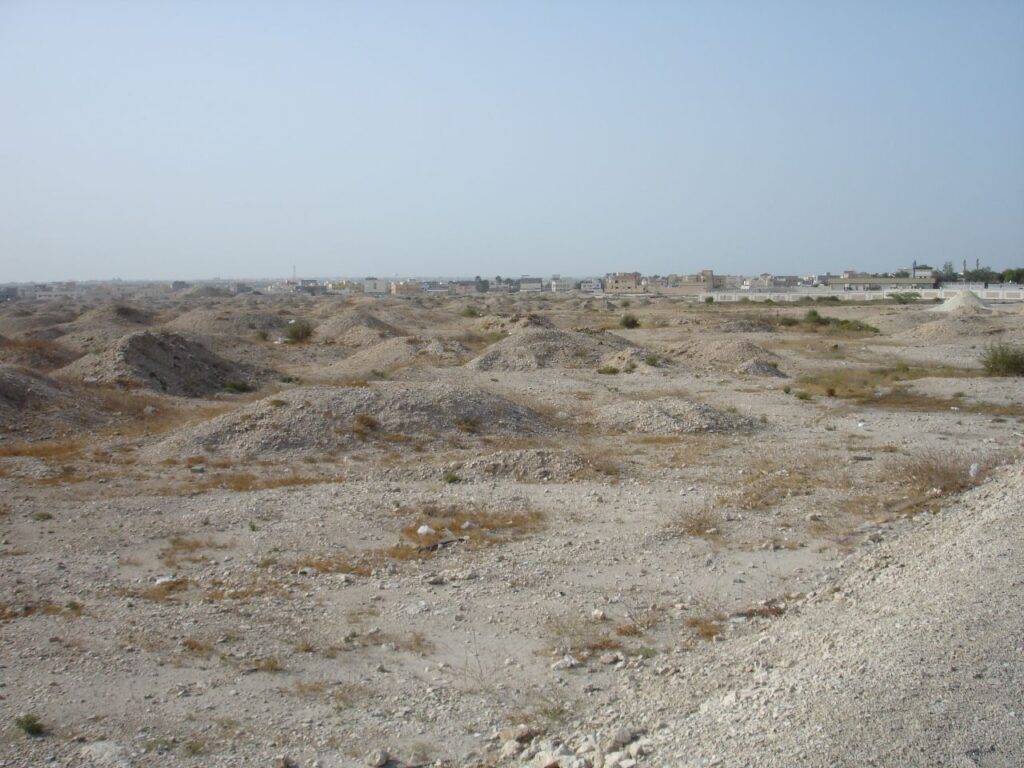
Bani Jamra Village
For generations, local artisans in Bani Jamra have crafted exquisite handwoven fabrics, using traditional wooden looms to produce intricate designs. These textiles were historically worn by royalty and nobility, and today, they remain an essential part of Bahraini traditional attire. Visitors can explore small workshops where skilled weavers work with vibrant threads of silk and cotton, creating delicate patterns and embroidered fabrics used in ceremonial clothing, scarves, and household decor.
Best Cultural & Historical Landmarks
Bahrain Fort (Qal’at al-Bahrain)
A UNESCO World Heritage Site, Bahrain Fort (Qal’at al-Bahrain) is one of the most important archaeological and historical landmarks in Bahrain. Once the capital of the Dilmun civilization, this ancient fortress dates back over 4,000 years and has served as a military, trade, and political center throughout Bahrain’s history.
The fort, located on the northern coast of the island, sits atop a 7-layered archaeological mound, where excavations have revealed remnants of Dilmun, Portuguese, and Islamic-era settlements. Visitors can explore the fort’s massive stone walls, defensive towers, and courtyards, offering insight into Bahrain’s strategic role as a trade hub in the Gulf. The site also provides stunning views of the surrounding coastline, especially at sunset.
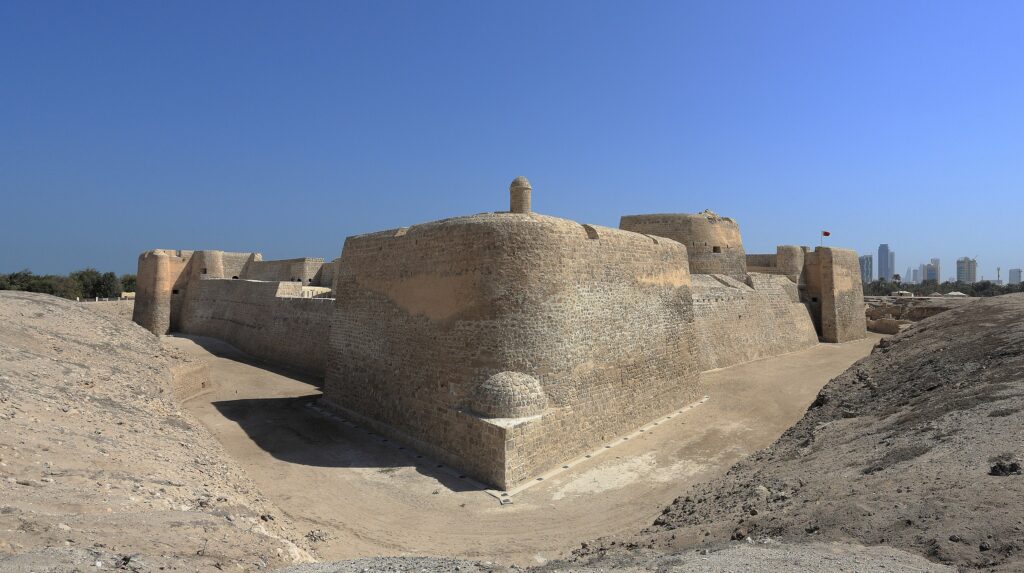
Bab Al Bahrain
Located in the heart of Manama, Bab Al Bahrain is a historic gateway that serves as the entrance to the bustling Manama Souq, one of Bahrain’s most vibrant traditional markets. Built in the 1940s, this architectural landmark once marked the city’s coastline before land reclamation reshaped the area. Today, it stands as a symbol of Bahrain’s rich trading heritage, blending traditional Islamic design with modern influences.
Beyond the archway, visitors step into the Manama Souq, a maze of narrow alleyways filled with shops selling spices, textiles, gold jewelry, perfumes, handicrafts, and Bahraini pearls. The souq is a great place to experience Bahraini culture, interact with friendly merchants, and enjoy traditional Bahraini sweets, coffee, and street food.
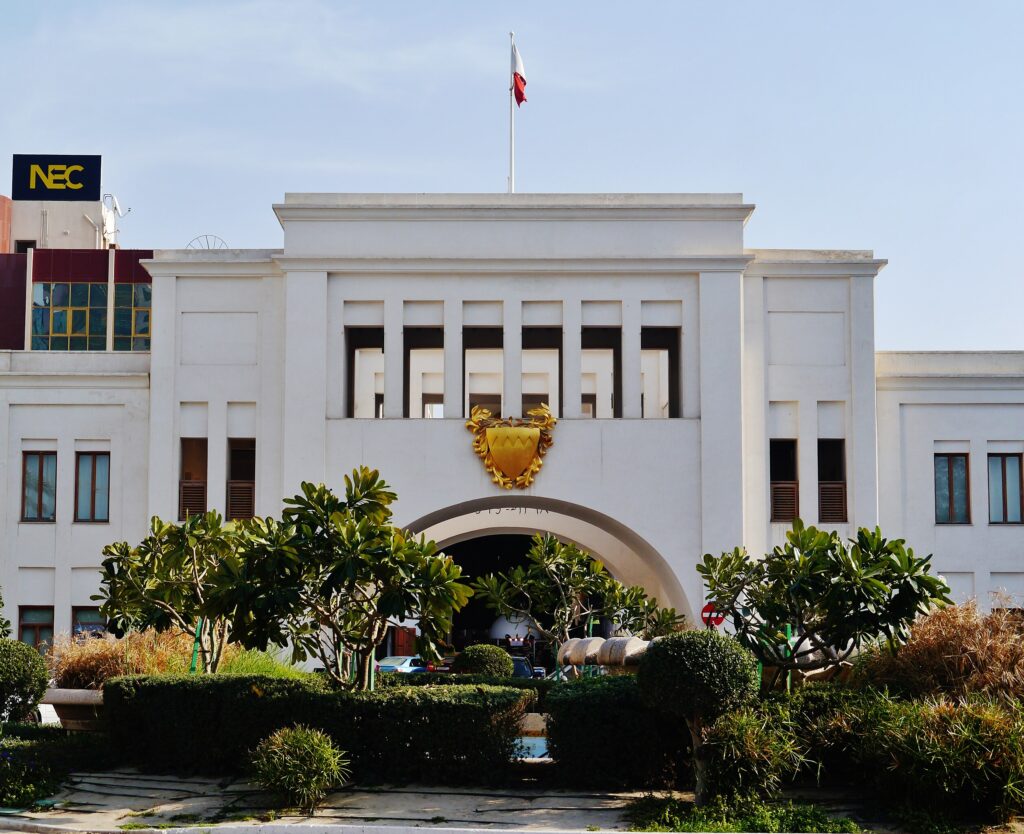
Al-Fateh Grand Mosque
Located in Manama, the Al-Fateh Grand Mosque is one of the largest mosques in the world, capable of accommodating over 7,000 worshippers. Named after Ahmed Al-Fateh, the founder of modern Bahrain, this magnificent mosque is a symbol of Islamic heritage, architectural grandeur, and religious harmony.
Built using high-quality materials from around the world, the mosque features an enormous fiberglass dome, one of the largest in the world, Italian marble floors, and stunning intricate calligraphy adorning its walls. The blend of traditional Arabic design with modern elements makes it one of Bahrain’s most visually impressive landmarks.
Unlike many mosques in the region, Al-Fateh Grand Mosque is open to non-Muslim visitors, offering guided tours that provide insights into Islamic culture, Bahraini traditions, and the mosque’s architectural significance.
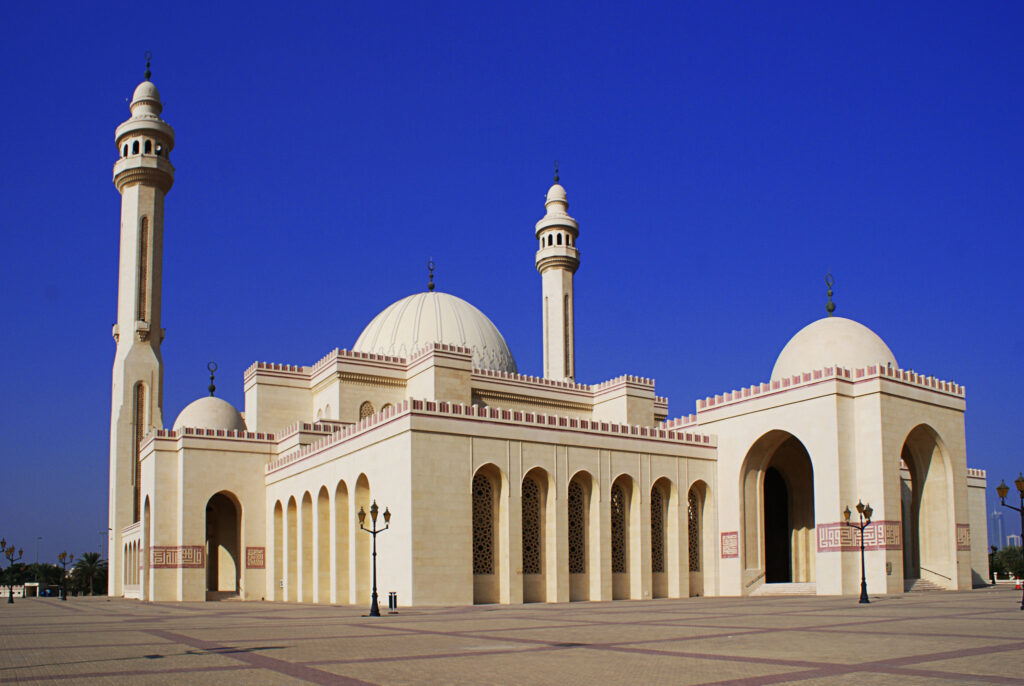
Beit Al Quran
The museum features centuries-old Qur’ans from across the Islamic world, including handwritten copies from the early Islamic period, rare gilded manuscripts, and intricately decorated calligraphy pieces. Some manuscripts are written on parchment, rice paper, and even grains of rice, showcasing the skill and artistry of ancient Islamic scribes.
Travel Tips for Visiting Bahrain
Best Time to Visit
- Winter (November–March): The best season for sightseeing and outdoor activities.
- Spring (April–May): Great for cultural festivals before the summer heat.
- Summer (June–September): Extremely hot, ideal for indoor attractions and beach resorts.
- Autumn (October–November): Pleasant temperatures, perfect for exploring desert landscapes.
Visa & Entry Requirements
- Many nationalities can obtain an e-visa or visa on arrival.
- GCC residents have easier entry options.
Cultural Etiquette & Safety
- Bahrain is relatively liberal, but modest dress is recommended in public.
- Alcohol is legal but only available in hotels and private clubs.
- Public drinking is not allowed.
- Bahraini hospitality is warm and inviting—respecting local customs is appreciated.
Driving and Car Rental Tips
Renting a Car
Bahrain has major international and local rental agencies, making it easy for visitors to rent a car. Companies such as Hertz, Avis, Budget, and local operators provide a variety of vehicle options, from economy cars to luxury SUVs. Renting a car is highly recommended for travelers looking to explore beyond Manama, as public transportation is limited outside the city.
Most tourists will need an International Driving Permit (IDP) in addition to their home country’s valid driver’s license to rent and drive a car in Bahrain. It’s best to check rental agency requirements before arriving. Residents of GCC countries can use their national driving licenses without an IDP.
Driving Conditions & Rules
Bahrain has well-maintained roads and highways, making it a comfortable place to drive. However, visitors should expect heavy traffic in Manama, particularly during peak hours (7:00–9:00 AM and 4:00–7:00 PM).
- Fuel prices are cheap compared to global standards, making road trips affordable.
- Speed limits and traffic laws are strictly enforced, with cameras monitoring speed violations and reckless driving.
- Seat belts are mandatory for all passengers, and using a mobile phone while driving is prohibited unless using a hands-free device.
- Roundabouts are common, and right of way is given to vehicles already inside the roundabout.
For those planning to visit sites like Bahrain Fort, Al-Areen Wildlife Park, and the Hawar Islands ferry terminal, having a rental car provides convenience and flexibility, making it one of the best ways to explore Bahrain comfortably.
Bahrain offers a harmonious blend of history, culture, and modern luxury, making it a must-visit destination in the Gulf. From ancient forts and pearl diving heritage to high-end shopping and vibrant souks, there is something for every traveler.

Published March 09, 2025 • 11m to read

